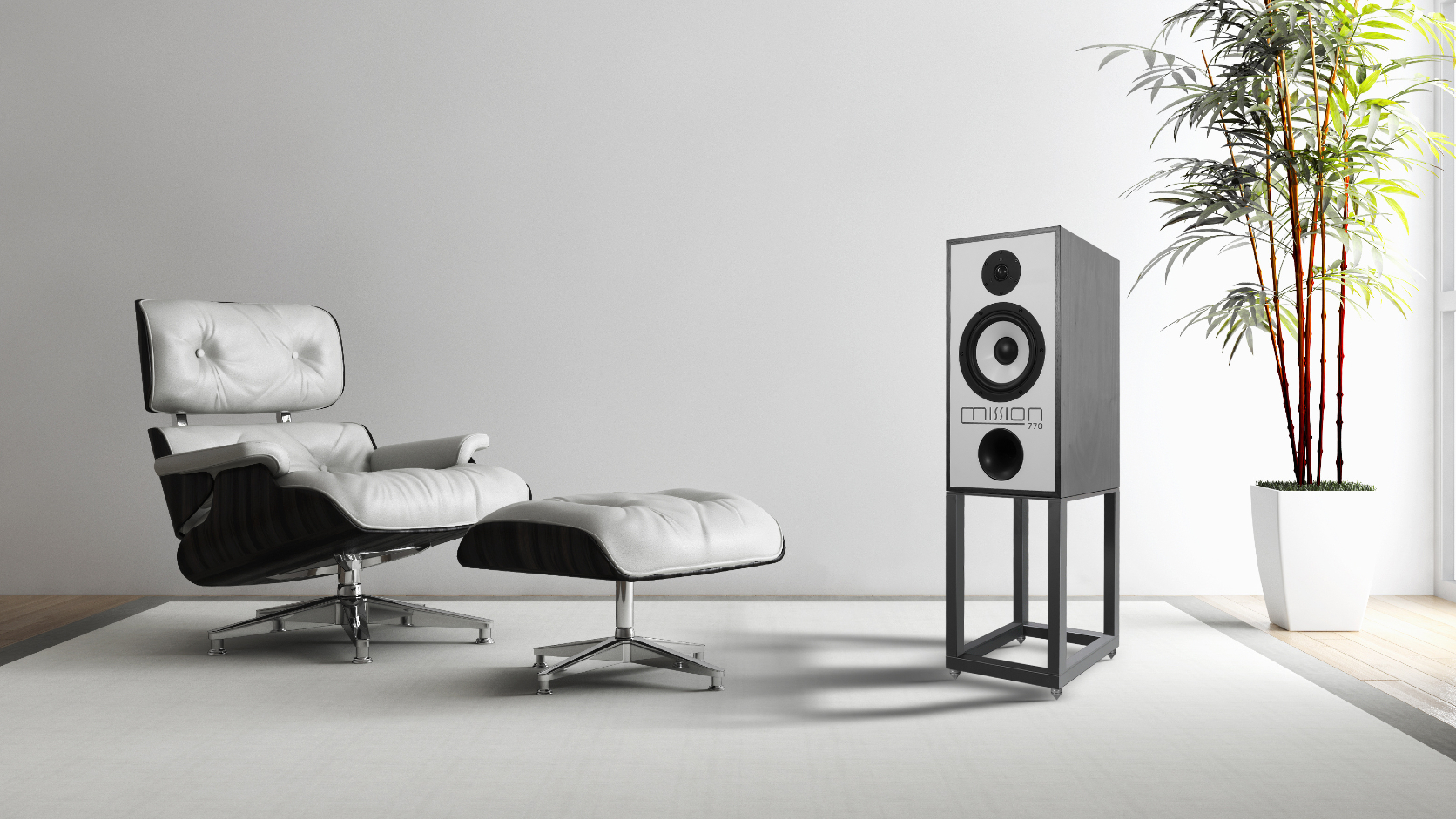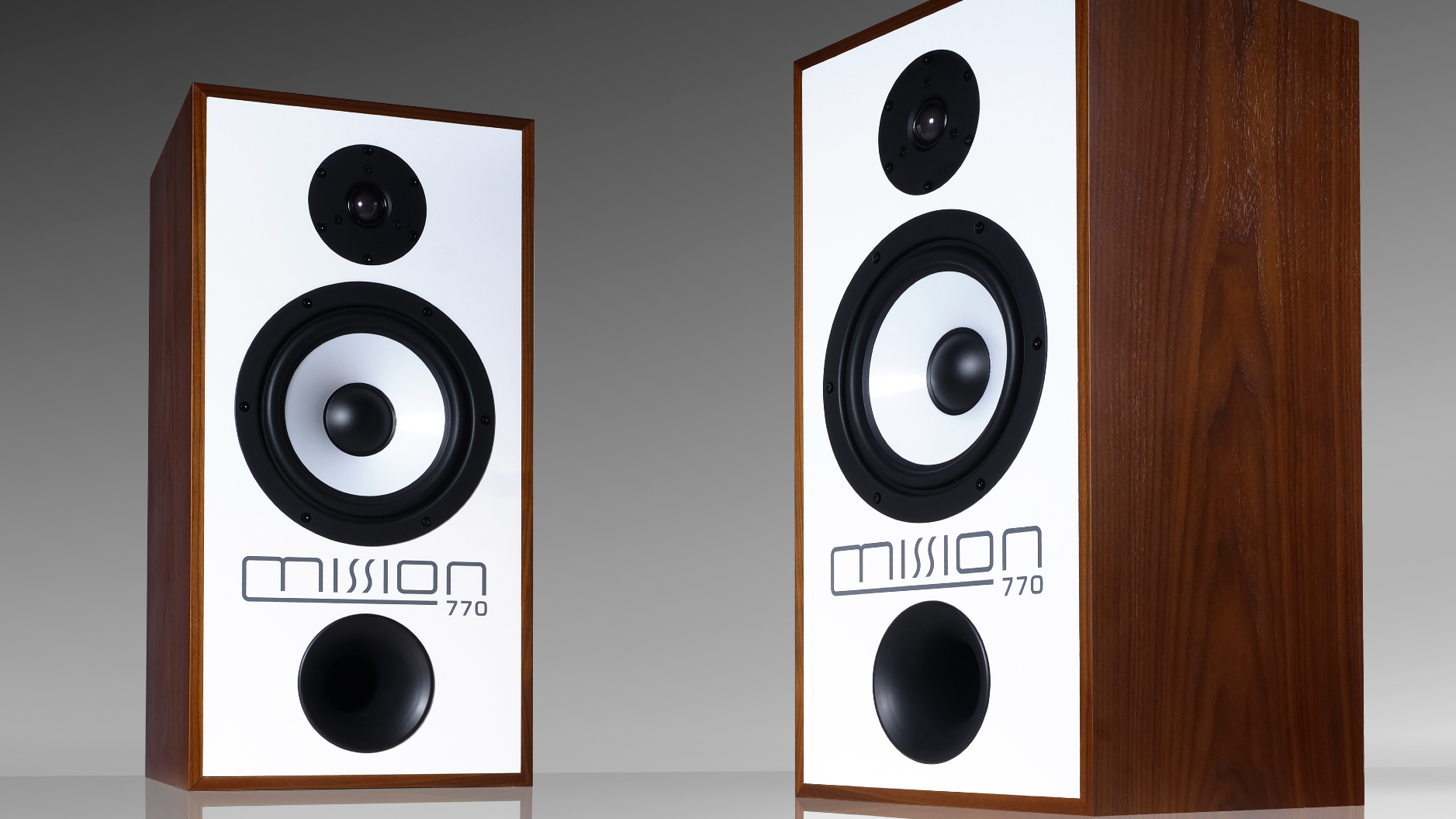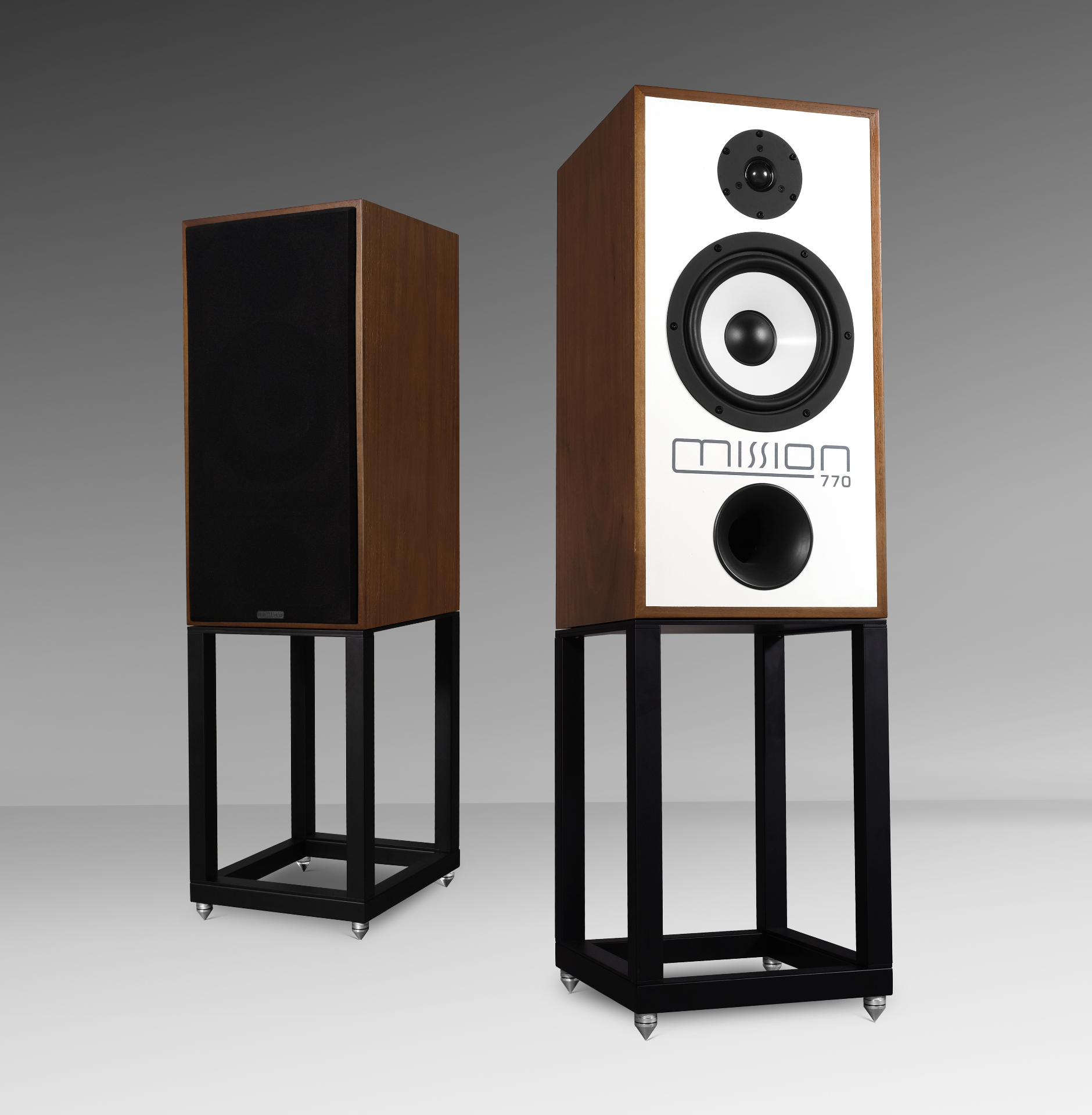Iconic Mission 770 speakers resurrected: vintage design meets modern performance
Classics rock

Mission started life in 1977 and has been responsible for some of the finest speakers ever made. Perhaps the most influential model in the British audio specialist's history, released just a year after the company’s inception, is the Mission 770 speaker. And now it’s coming back.
44 years since its debut, Mission is not only bringing a re-engineered version of the 770 standmount speaker to market – this British classic will be designed, engineered and made in the UK.
The appeal of the original Mission 770 was, as simple it might seem, the way it sounded. That’s because back in the late 1970s, Mission decided to do something very different – and something with which the What Hi-Fi? team wholeheartedly agree. The company chose to prioritise extensive listening sessions over technical specifications when it came to perfecting the sound of the speakers.
Industry experts and leading hi-fi journalists were involved in hours of listening tests to fine-tune the final sound of the Mission 770s. Farad Azima, Mission’s founder, was driven to make a speaker that could marry the accuracy and transparency of the famous BBC speaker design, but with tighter bass and a more engaging sound. A new level of musicality was the result – and that’s exactly what Mission wants to deliver once more with the new 770.

Peter Comeau, Mission’s director of acoustic design (and one of the world’s most successful speaker designers) is the man in charge of the project. Revisiting the classic speaker, which he remembers well from his time reviewing hi-fi, Comeau settled on two key elements that set the Mission 770 apart and helped deliver its highly musical performance.
First, there was the polypropylene speaker cone – claimed to be unique in a consumer product at the time – and second, the impressive resonance control of the cabinet. Sure enough, these elements have formed the cornerstone of the 21st century reimagining. But while the ethos and foundations remain the same, every part of the new Mission 770 speakers has been upgraded, from the drive units, to the crossover, to the cabinet.
Firstly, the drive units. A completely new polypropylene driver has been developed, which aims to marry the extended response and natural tone of the original with a motor system brought right up to date. As on the original, the driver is built on to a 20cm die-cast chassis with large rear ‘windows’ designed to reduce reflections.
Get the What Hi-Fi? Newsletter
The latest hi-fi, home cinema and tech news, reviews, buying advice and deals, direct to your inbox.
The speaker cone has also been made stiffer than the original, to help deliver tighter, faster bass. In turn, the cabinet and reflex port have been tuned to a very low frequency in an effort to achieve a wide bandwidth and an articulate bass. Mission is promising smooth, powerful bass performance below 30Hz – no mean feat for a speaker of this size.
The original Mission 770 had focused on midrange performance to get the best out of vinyl – the popular hi-fi source of the time. The new 770 promises all-round excellence suited to digital as well as analogue sources. This is achieved using a treble unit with a lightweight, damped microfibre dome that delivers a smooth response and is built to match the tonal balance of the mid/bass driver.
On to the crossover, and today’s advanced software allows Mission to map and measure the accuracy of this crucial component, which, coupled with hundreds of hours of listening sessions and adjustments along the way, helps perfect the 770 sound.
More than 120 circuit iterations were tried in the tuning process. High quality components are of course used throughout and care is taken with the component layout and crossover position to ensure low coloration and maximum transparency.
The final piece of the new Mission 770 speaker is the cabinet and, in keeping with the rest of the design, it’s a thoroughly modern construction with echoes to the original, thanks to the real-wood veneered cabinet with striking white laminated front baffle.
While the original BBC-influenced cabinet used a thin-wall design damped by mass loading with bitumen pads, the new 770 features a twin-wall sandwich of high-density MDF and particle board, bonded by a layer of high-damping glue. Mission says this reduces resonance and sonic coloration from the cabinet to well below audible levels. Further internal damping and bracing adds strength and aids dynamic performance.
To cap it all, this revamped classic speaker is designed, engineered and made in the UK, with parent company IAG expanding their facilities in Huntingdon, Cambridgeshire, to enable the manufacture of the 770 on site.
This new Made in the UK initiative will see a number of specially selected products from IAG’s family of brands engineered and built on site, including heritage products from Wharfedale, Leak and Castle, as well as Mission.

The first pairs of Mission 770s will be available to purchase from the end of March, in a choice of walnut or black wood veneers, at an RRP of £3,500 per pair (which is roughly $4600 or AU$6225, before shipping fees and associated duties).
The price includes the pair of dedicated floor stands pictured above, custom made in the UK to ensure each speaker is positioned at the perfect height, with a damped carbon steel frame and large stainless steel spikes to protect from unwanted vibrations. The package is completed by a set of stainless steel spike seats for hard floors and a pair of handling gloves.
We cannot vouch for the performance yet – but we are certainly looking forward to hearing them.
MORE:
Old speakers vs. new speakers: Mission speakers compared
See our pick of the best speakers
And these are the best speaker cables
Read our feature on 6 of the best British hi-fi innovations and technologies
Becky has been a full-time staff writer at What Hi-Fi? since March 2019. Prior to gaining her MA in Journalism in 2018, she freelanced as an arts critic alongside a 20-year career as a professional dancer and aerialist – any love of dance is of course tethered to a love of music. Becky has previously contributed to Stuff, FourFourTwo, This is Cabaret and The Stage. When not writing, she dances, spins in the air, drinks coffee, watches football or surfs in Cornwall with her other half – a football writer whose talent knows no bounds.
-
Gray ....after that article, anyone care to bet against a forthcoming WHF 5-star review?Reply
(Sort of a forgone conclusion really isn't it?). -
Hifiman Ah, Mission equipment. I still use the Mission Cyrus One amp and 70 mk2 speakers from the mid-early 80s. How incredible and, especially, engaging they both still sound 40 years on. Together they cost me under £200 new at the time. I know the hifi industry and media have to ensure the latest components are stated as sounding so superior to those that went before but, actually, my setup still sounds great compared to any modern equipment, including Mission’s own.Reply
